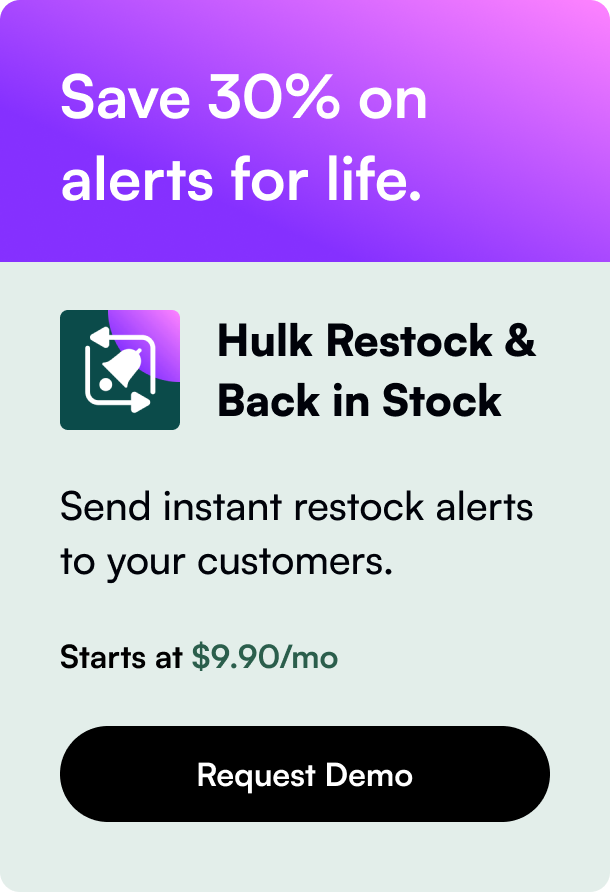Table of Contents
- Introduction
- What is Shopify Flow?
- Shopify Flow Cost
- Features and Plans
- How Does Shopify Flow Work?
- Steps to Create Workflows
- Shopify Flow Examples
- Benefits and Drawbacks
- Conclusion
- FAQ
Introduction
Managing an e-commerce business involves juggling a plethora of tasks, from overseeing customer orders to updating inventory and executing marketing campaigns. What if you could delegate many of these mundane but necessary tasks to an automated system? This is precisely what Shopify Flow offers. Shopify Flow is an automation tool designed to ease the burdens of repetitive tasks, allowing store owners to focus on growing their business.
In this blog post, we will explore what Shopify Flow is, how it operates, and its benefits. We will delve into how you can create workflows, both manually and through templates, to streamline various processes in your Shopify store. This guide aims to be an informative resource on making your e-commerce operations more efficient using Shopify Flow.
What is Shopify Flow?
Shopify Flow is an automation platform integrated within Shopify’s ecosystem, specifically tailored for e-commerce merchants. This tool lets you create custom automation rules to streamline repetitive tasks and workflows without any coding knowledge. By automating these processes, Shopify Flow helps save time and allows you to direct your energies on more critical business aspects.
Shopify Flow works through an intuitive drag-and-drop interface where you can set up workflows for various activities within your store. Additionally, it can interact with other installed apps, triggering actions and sending data as part of its process. Workflow creation can also be managed directly from your Shopify Admin, allowing for automation across multiple orders, draft orders, customers, and products.
Shopify Flow Cost
One of the most appealing aspects of Shopify Flow is that it is entirely free. Initially, it was only available to Shopify Plus merchants, but it has now been extended to stores on the Shopify and Advanced plans as well. While most functionalities are accessible across these plans, some differences exist which we will explore next.
Features and Plans
Shopify Flow offers a variety of powerful features that vary slightly depending on your Shopify plan. Here are some of the main components:
- Triggers: Events that initiate the workflow.
- Conditions: Criteria that must be met for an action to occur.
- Actions: Tasks executed if the conditions are fulfilled.
Flow connectors can also be added to your store, facilitating the integration of third-party apps, further extending the capabilities of your workflows.
Example of Features by Plan
Basic Plan
- Access to standard triggers like 'Order Created' or 'Customer Added.'
- Basic conditions and actions for straightforward workflows.
Advanced Plan
- Increased variety of triggers and more complex conditions.
- Enhanced actions, such as sending data to external apps or platforms.
Shopify Plus Plan
- Access to all triggers, conditions, and extensive actions.
- Advanced connectors for deeper integration with other tools and apps.
How Does Shopify Flow Work?
Shopify Flow operates through its elements – triggers, conditions, and actions – to build workflows that automate repetitive tasks.
Shopify Flow Connectors
The Shopify Flow connector is an essential add-on for your store, allowing automated workflows and processes. These connectors can link numerous apps to Shopify Flow, making it possible to execute actions like order processing or inventory management based on specific circumstances.
Steps to Create Workflows
Creating workflows in Shopify Flow is straightforward. You can either build them manually or use templates. Let’s examine both methods.
Creating Workflows Manually
- Open Shopify Flow from your Admin panel.
- Select ‘Create workflow.’
- Choose a trigger to start the automation, like 'Order Created.'
- Add conditions and actions based on your needs.
- Save and name your workflow before activating it.
Creating Workflows with a Template
- Open Shopify Flow and select ‘Create workflow.’
- Browse available templates that meet your needs.
- Install and customize the template to suit your workflow.
- Activate the workflow to start using it.
Shopify Flow Examples
Abandoned Cart Recovery
One efficient use of Shopify Flow is to automate the recovery of abandoned carts. When a customer adds items to their cart but leaves without purchasing, you can set a workflow to send follow-up emails, perhaps offering a discount to encourage completion of the purchase.
Merchandising
Another functionality is streamlining your store’s merchandising process. For example, when new items are added, Shopify Flow can automatically tag and categorize these products, placing them in the appropriate collections.
Customer Segmentation
Effective customer segmentation is vital for targeted marketing. Shopify Flow can automate this by tagging customers based on their purchase categories and adding them to segmented email lists for tailored promotions.
Product Promotions
For promoting new products, Shopify Flow can expedite the process by automatically generating marketing campaigns on social media as soon as a new product is listed.
Creating Urgency for Low-Inventory Items
Using Shopify Flow, you can create a sense of urgency for products with low inventory by tagging and moving them to a “Low in Stock” collection, prompting customers to make quick decisions.
Benefits and Drawbacks
Benefits
- Time-Saving: Focus your efforts on growth rather than mundane tasks.
- Customization: Create intricate workflows tailored to your business needs.
- Efficiency: Automate repetitive tasks, reducing the risk of human error.
- Integration: Seamlessly integrates with various third-party apps.
Drawbacks
- Learning Curve: It might take some time to set up complex workflows.
- Plan Limitations: Some advanced features are only available on higher-tier plans.
Conclusion
Although Shopify Plus requires a substantial monthly commitment of at least $2000, the investment is worthwhile considering the automation capabilities offered by Shopify Flow. By delegating repetitive tasks to Shopify Flow, you free up valuable time to concentrate on expanding your business.
With Shopify Flow, you can manage reviews, segment customers based on metrics such as lifetime value or current expenditure, and track inventory. It also supports marketing, customer loyalty, and retention initiatives while enabling specific order discounts.
Ensure your store is not only in good shape but thriving, with the aid of a professional automation tool at an affordable price.
FAQ
Q: What kinds of tasks can Shopify Flow automate?
A: Shopify Flow can automate a variety of tasks, including order processing, customer segmentation, inventory management, and marketing campaigns.
Q: Is Shopify Flow available on all Shopify plans?
A: Yes, Shopify Flow is available on the Shopify, Advanced, and Shopify Plus plans.
Q: Do I need coding skills to use Shopify Flow?
A: No coding skills are required to use Shopify Flow. Its drag-and-drop interface makes it easy to create workflows.
Q: Can I use third-party apps with Shopify Flow?
A: Yes, you can integrate third-party apps with Shopify Flow using connectors.
Q: How can Shopify Flow help increase sales?
A: By automating tasks like abandoned cart recovery and targeted marketing campaigns, Shopify Flow can help increase conversions and sales.
By utilizing Shopify Flow, you can transform your Shopify store into a well-oiled machine, freeing you and your team from repetitive tasks and enabling you to focus on what really matters – growing your business.







